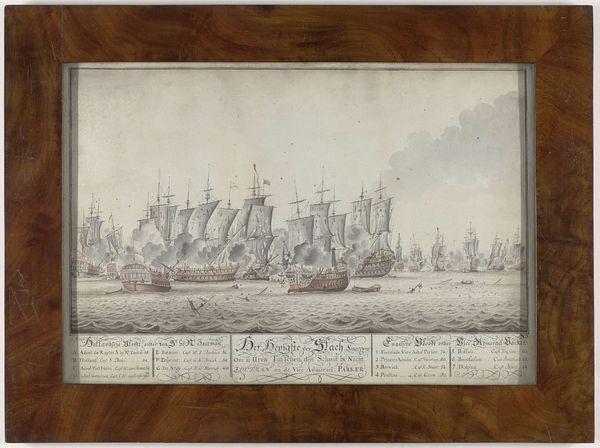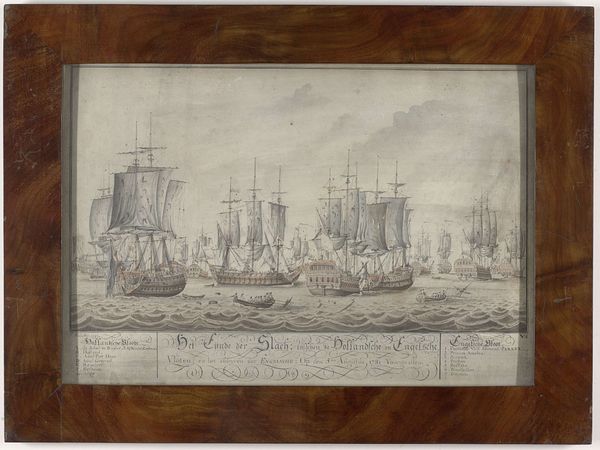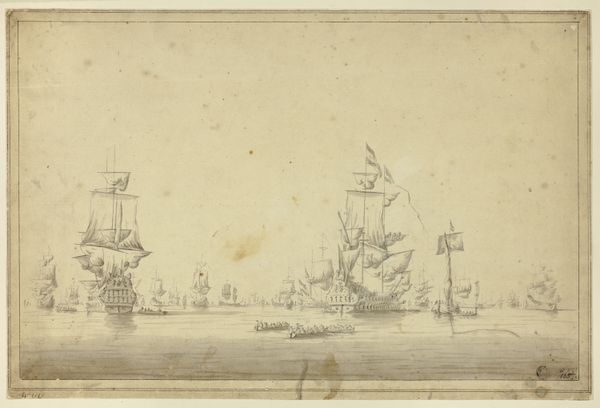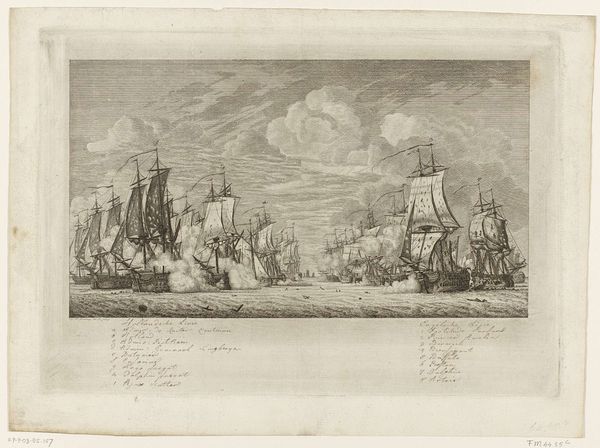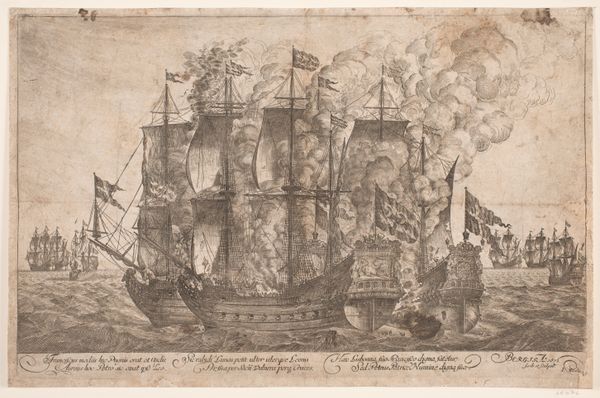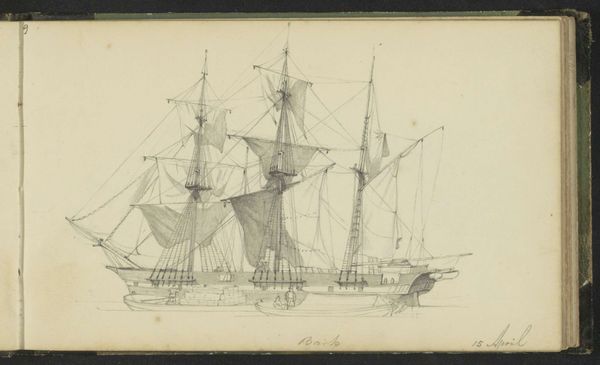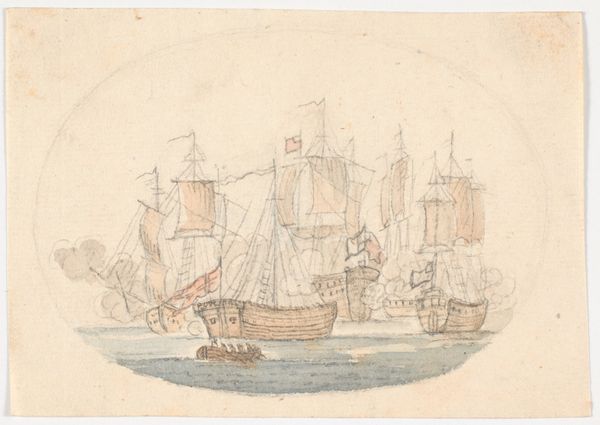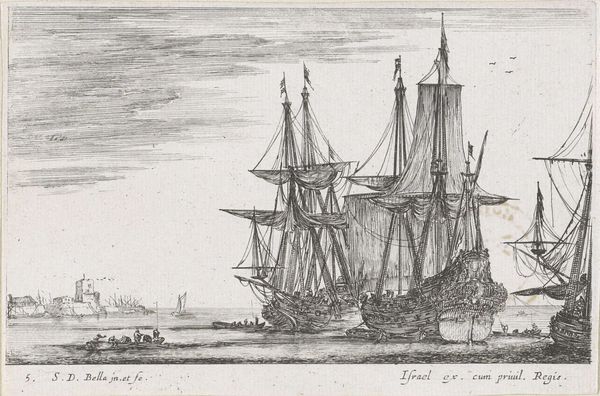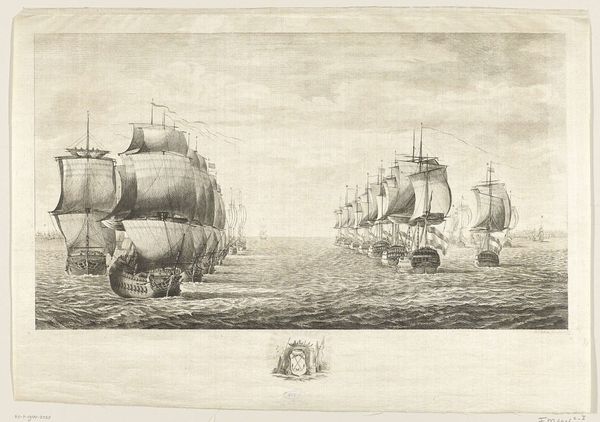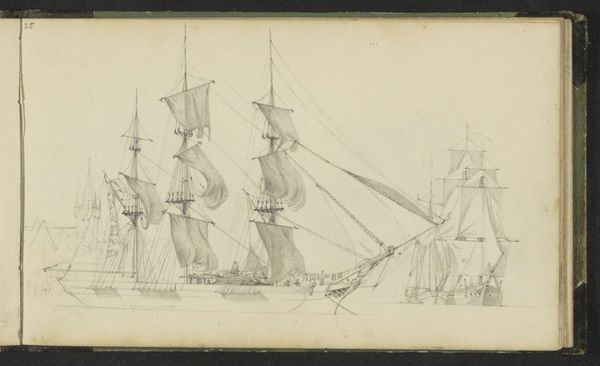
Dimensions: frame height 48 cm, frame width 64.5 cm, frame thickness 2.1 cm, image height 29 cm, image width 50.4 cm
Copyright: Rijks Museum: Open Domain
Curator: This fascinating image, created around 1783 by J. Weuyster, depicts "The Action off Dogger Bank (5 August 1781)". It's an engraving with ink and colored pencil on paper, capturing a naval engagement. Editor: My initial impression is one of stark order and looming power. The geometric precision in the ships’ formations contrasts sharply with the implied chaos of naval conflict. Curator: Absolutely. The formal arrangement of the ships—rows upon rows facing each other—highlights a structured dance of aggression. Consider how Weuyster uses line and form to communicate depth. Note, in particular, how the receding ships become less defined, reinforcing the idea of distance. Editor: That deliberate arrangement is fascinating. These ships represent not just vessels, but emblems of nations clashing for dominance. This battle itself, the action off Dogger Bank, gains deeper symbolic resonance, especially since it lacks figures; all is power, represented via structure. The battle becomes more of an act. Curator: Precisely. And the visual language itself serves to reinforce that national identity, what ships represent. But it's not just about what's shown; it's about the relationship of line, shape, and form in creating the representation itself. Editor: What stands out is how this visual representation memorializes naval power. The engraving itself has the symbolism of that power of a specific nation at that moment, captured for generations to see. This is no simple fight at sea. It's cultural memory, strategy and naval strength preserved, a visual narrative meant to bolster national identity. Curator: An insightful interpretation. By prioritizing structure and symbolism over realism, the artist has created a powerful commentary on power and order that resonates through time, across generations. Editor: And on the nature of cultural memory itself. These are emblems we project onto the past, transforming these prints into icons that reflect—and shape—our own identities and ambitions, and understandings of what a ship can represent.
Comments
No comments
Be the first to comment and join the conversation on the ultimate creative platform.
